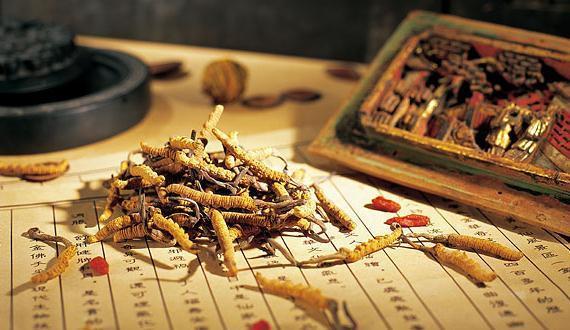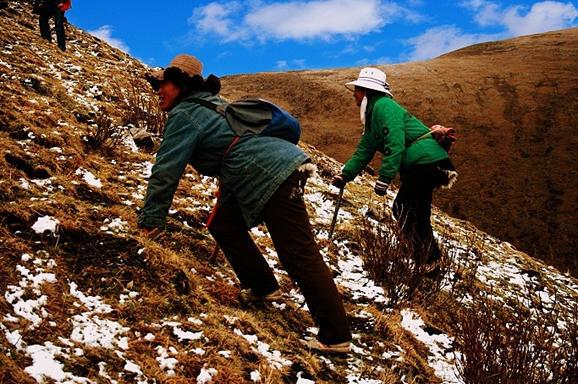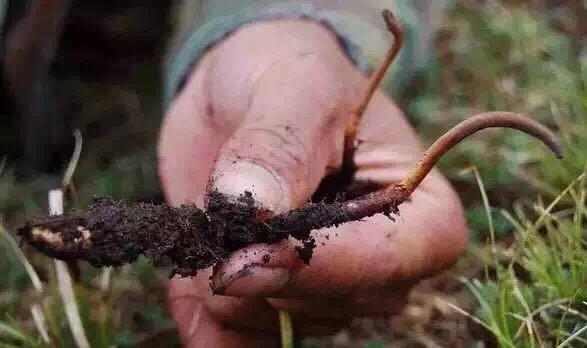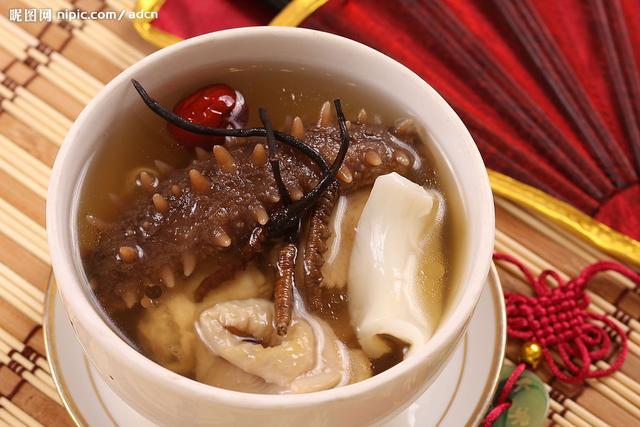Top tips for finding cordyceps

Every lunar calendar April and May, as the snow melts, cordyceps (Chinese caterpillar fungus), a precious herb in traditional Chinese medicine, becomes ready for harvesting. Shepherds rush to the mountains and dig for the pricey herb. Each stalk may seem unimpressive, but is quite difficult to find.
Cordyceps are mostly wild, and grow on pastures near snowy shrubs at the foot of the mountain, usually at an altitude of around 3,000 to 5,000 meters. Experienced locals would pack some food, tea, digging tools, steel beams, shovels, and leave before dawn. They would have lunch on the pasture and finish digging by 5 or 6‘o clock.
Damxung County in Northern Tibet is well-known for its shepherding industry. Its wide-open plains are nature’s pasture. Early summer, flocks of wild geese come to rest and procreate. There’s always animals like foxes, wild bison, wild donkeys, and wild antelopes on the shores of Lake Namtso. The lake produces scale-less fish and narrow-scale fish, as well as medicinal treasures like cordyceps, snowy lotus, and fritillaria.
Jinduo, Party Secretary of Guoqing Village in Damxung, turned 52-years-old this year. He has dug for cordyceps since he was 11-years-old.

Shepherds crawl for cordyceps
"You have to crawl to find them, and look for their black tops over the soil, they’re about as tall as weeds.” Jinduo said. The cordyceps we see on the market are usually a dark yellow, but cordyceps in the wild have a soil-covered black color. After the cordyceps are picked, the shepherds will brush off their dirt, dry, and sort them, before merchants come for collection.
“You have to dig at the right place!” Jinduo said of the digging process. He said people who dig cordyceps need to be in good physical condition, climb well, and have good eyesight.
Propelled by high prices, the army of cordyceps-diggers is growing every day, but also creating its share of environmental problems. The government is using measures to manage the digging, and emphasizing proper digging techniques so that the areas with cordyceps have sustainable growth.

cordyceps
“As soon as you dig out the cordyceps, you need to plant the turf back. Dig out the cordyceps with their dirt, then repot the area.” While it looks like a lot was dug up, the shepherds know when to stop. They usually support themselves with their hands, and pick up cordyceps with one hand while planting back the turf with the other.
Shepherds have a respect and awe for these treasures of nature. This pasture is their source of survival. They love this land and want to make it thrive for future generations.

A precious herb for medicine -- cordyceps
What makes the cordyceps good? Jinduo said you can tell by their size, usually, bigger is better. But at the end of the cordyceps harvest, you can find cordyceps with bigger roots in the top part of the soil and hollow roots down below, because the top part absorbed all the nutrition.

Cordyceps is not for just anyone to harvest. Local shepherds have to get approval from related agencies before digging. The Damxung government has combined the cordyceps harvest with tourism this year. The May 28th event, “Meet at Lake Namtso for a Journey of Cordyceps-Hunting,” will be an opportunity for tourists to experience the dig with the help from shepherds.
Your Comment
Name E-mailRelated News
-
;
-
-

-
Do you know how the best cordyceps sinensis in Tibet comes to be?
Cordyceps sinensis is a well-known and mysterious product from Tibet. The cordyceps sinensis that comes from Nagqu, Tibet is known to have the best quality and is also the most expensive.
-
-
-

-
Story of digging cordyceps sinensis in Tibet's Nagqu
In Tibet, there is a long nomadic history of being without a permanent residence, but rather pitching a tent upon reaching a water source and grassy area.
-
-
-

-
Stories of cordyceps sinensis
Cordyceps sinensis's trading is on the rise not only in China but also the world, and its value which is more than gold in its weight also enriches many local pickers on the Qinghai-Tibet Plateau.
-
Based in Lhasa, Tibet Vista is a Tibet travel agency that specialized in Tibet permit, and Tibet tours for both private and group travelers at a local price!
•4 Days Lhasa City Group Tour from USD 460 •8 Days Everest Base Camp Group Tour from USD 850 •15 Days Mt.Kailash Group Tour from USD 1780 •2016 Tibet Train Tours from Beijing, Shanghai, Chengdu, Xining,etc










